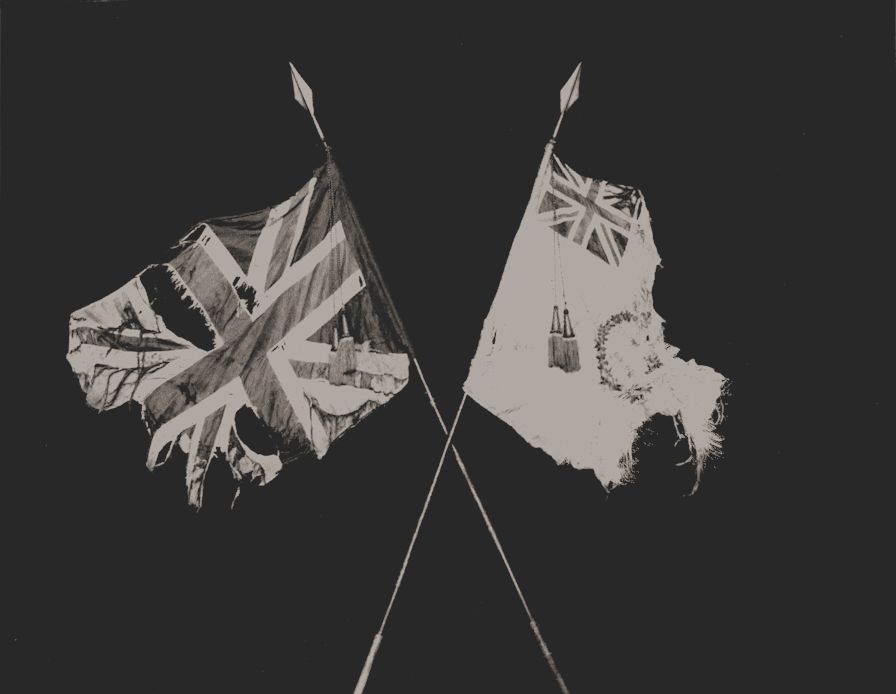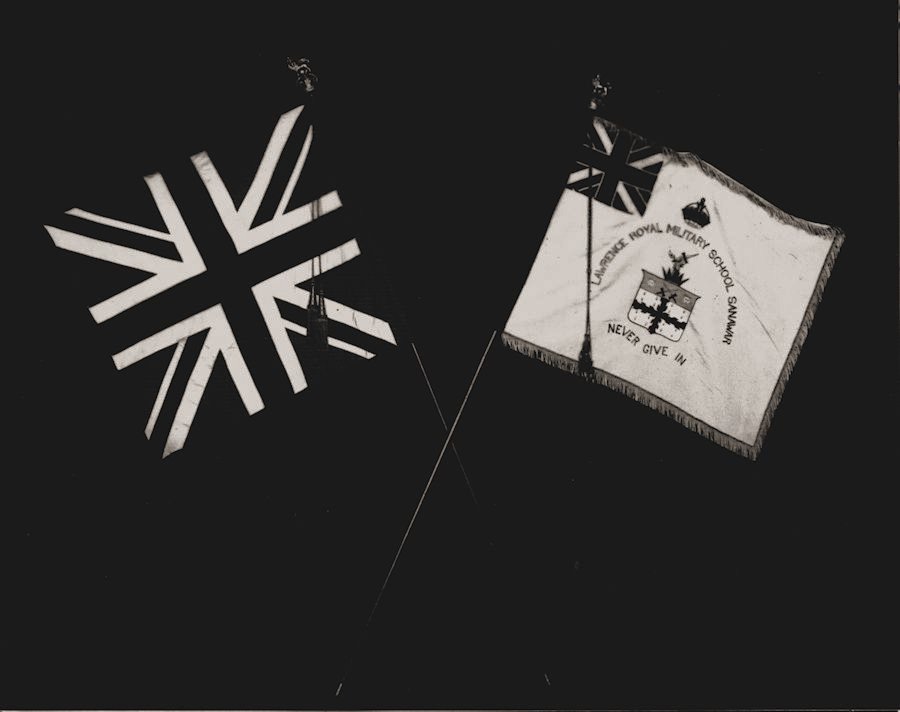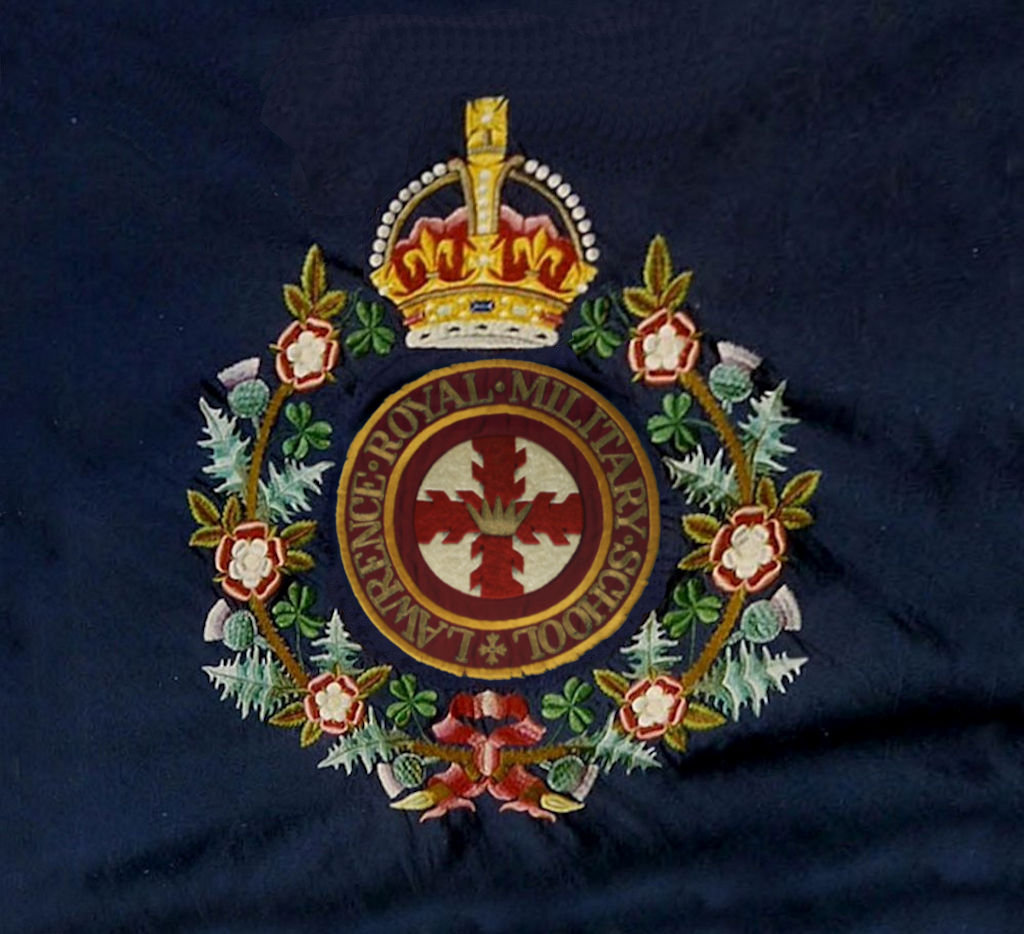The School Colours
On 28th June 1853, Sanawar was granted its first stand of Colours by Governor General Lord Dalhousie in fulfilment of an intention he had expressed to the Founder following his first visit and inspection of the Asylum in September 1851. The stand consisted of two flags, each of heavy duty double silk. The Asylum Colour was a flag of plain yellow with the Union flag 'canton', (in the upper left quarter); in the centre of the flag were the words "Lawrence Asylum Sanawar", embroidered in gold thread, encircled by a wreath of oak leaves entwined with the heraldic emblems of England, Scotland and Ireland. (The Rose, Thistle and Shamrock, respectively). This centrepiece was surmounted by a Lion rampant 'or ', (gold). The embroidery is said to have been done entirely by Lady Lawrence during the winter of 1852. The second was the Union flag, or 'Union Jack', granted by Vice-regal assent. These two Colours were thereafter carried on all ceremonial occasions and Sunday morning Church Parades for the next 70 years.




